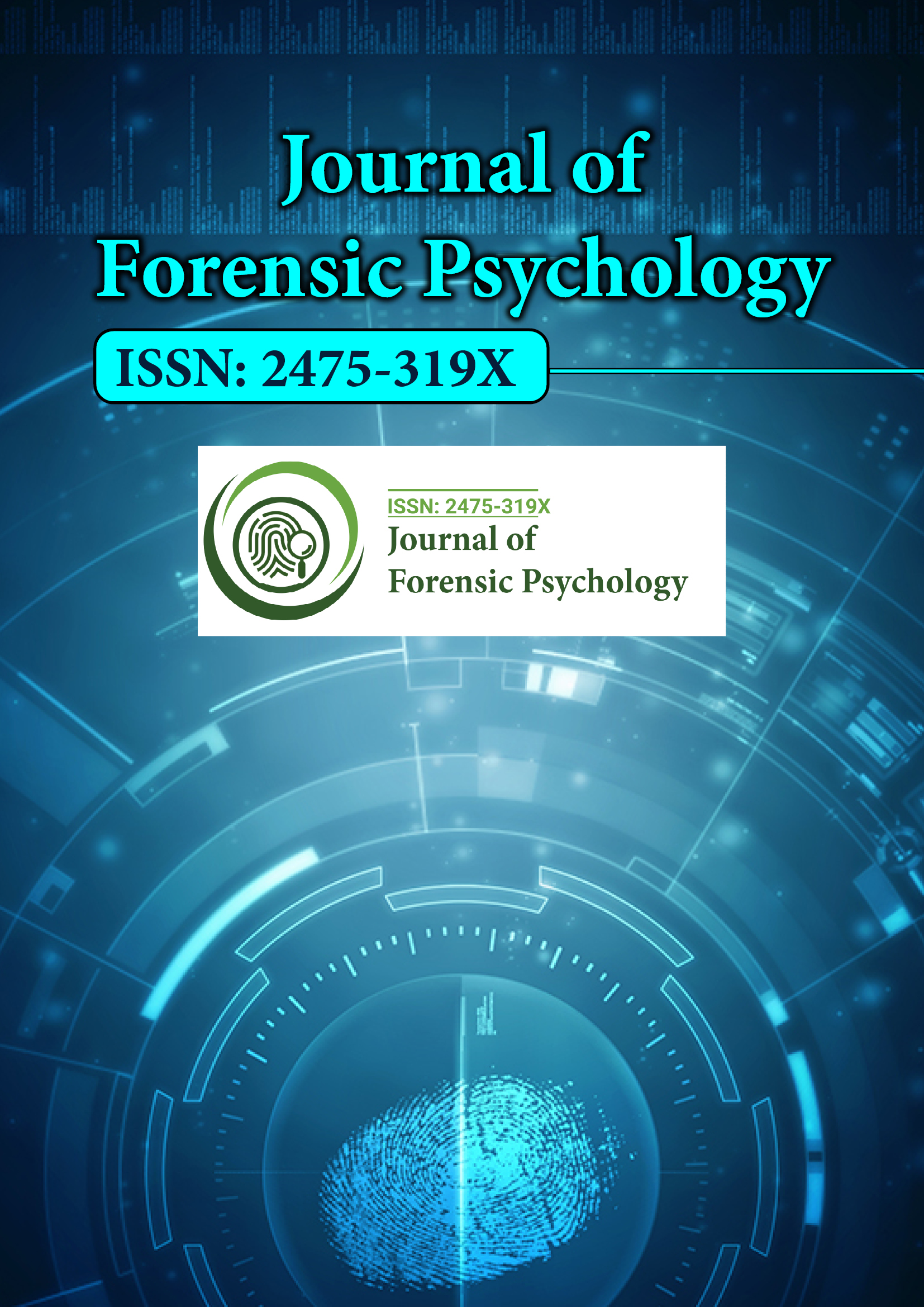Indexed In
- RefSeek
- Hamdard University
- EBSCO A-Z
- Publons
- Geneva Foundation for Medical Education and Research
- Euro Pub
- Google Scholar
Useful Links
Share This Page
Journal Flyer

Open Access Journals
- Agri and Aquaculture
- Biochemistry
- Bioinformatics & Systems Biology
- Business & Management
- Chemistry
- Clinical Sciences
- Engineering
- Food & Nutrition
- General Science
- Genetics & Molecular Biology
- Immunology & Microbiology
- Medical Sciences
- Neuroscience & Psychology
- Nursing & Health Care
- Pharmaceutical Sciences
Patient Perspective - (2022) Volume 7, Issue 7
Neonaticide: A Psycho-Social and a Criminogenic Concept
Received: 01-Jul-2022, Manuscript No. JFPY-22-17565; Editor assigned: 05-Jul-2022, Pre QC No. JFPY-22-17565(PQ); Reviewed: 19-Jul-2022, QC No. JFPY-22-17565; Revised: 27-Jul-2022, Manuscript No. JFPY-22-17565(R); Published: 04-Aug-2022, DOI: 10.35248/2475-319X.22.7.233
Description
Human life has gotten more complex as a result of the booming economic development and regular increases in comfort. In human civilization, a variety of issues of various dimensions are evolving. These issues are making life more complicated for people. Neonatalicide is a concept that is closely related to the psycho-social phenomenon and the criminogenic explanation. Teenagers are particularly susceptible to this psycho-criminogenic disease in real life. Young mothers become more sensitive as a result of the early pregnancy incident. As a result, many refuse to acknowledge that they are pregnant too soon out of concern for how this will be perceived by others. So, they hide their kids at home, at work, or on the side of the road. This pattern is gradually gaining momentum all around the world. This issue has taken centre stage, especially in developed nations where single parent households are on the rise and family bonds are tenuous. Suffocation, strangulation, head trauma, drowning, exposure, stabbing, burning, tossing to pigs, and burying alive are examples of neonaticide techniques. In some instances, women are also the targets of sexual exploitation. Once these defenceless ladies give birth to their offspring, things will move naturally.
A thorough investigation reveals that the issue might be seen as an inherent social complexity. Different people have different perspectives on neonaticide. People from many regions and cultures look at it from their own perspectives. It is viewed as a crime in England. It is considered a murder in America, according to some analysts. Of course, the opposite perspective, albeit unjustified, contends that because a newborn infant is not a person, killing one is acceptable. This viewpoint's proponent also asserts that mothers are excused from needlessly wasting up their time caring for children by neonaticide.
Neonatalicide has been a major global concern recently. Since the continued life of human society is directly affected, people have focused their attention on finding a solution to or effectively limiting the occurrence of these aberrant phenomena. Neonatalicide is being committed without being stopped because of psychological immaturity and other pertinent factors.
Domestic violence is the act of inciting fear in the home. Neonatalicide, the killing of babies by their own mothers, is considered one of the most extreme types of domestic abuse because it is cruel in nature. Every year, hundreds of moms either kill or leave to death their own newborn children. Without a doubt, a youngster is safest at home, and parents are compared to an umbrella. They defend kids from all types of danger. Because parents have a duty to safeguard their children, newbornicide is unquestionably an act of aggression. This is a blatant disregard for social conventions.
Conclusion
Neonatalicide is primarily a psycho-social phenomenon having strong biological, sociological, psychological, and criminogenic underpinnings. It is generally known that some unavoidable factors motivate mothers to undertake such offence. Of course, the subject is somewhat influenced by psychotic disorders or mental illnesses. According to research, moms who kill their newborns seem to share some characteristics, including age, marital status, familial status, ethnicity, and economic circumstances.
Citation: Balish S (2022) Neonaticide: A Psycho-Social and a Criminogenic Concept. J Foren Psy. 7:233.
Copyright: © 2022 Balish S. This is an open-access article distributed under the terms of the Creative Commons Attribution License, which permits unrestricted use, distribution, and reproduction in any medium, provided the original author and source are credited.

